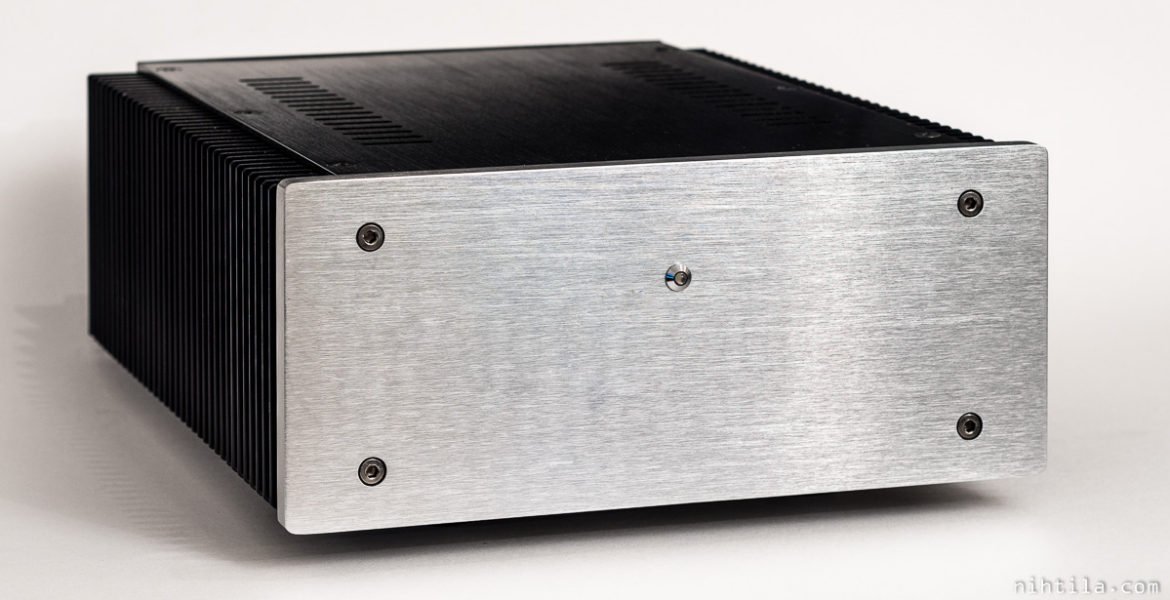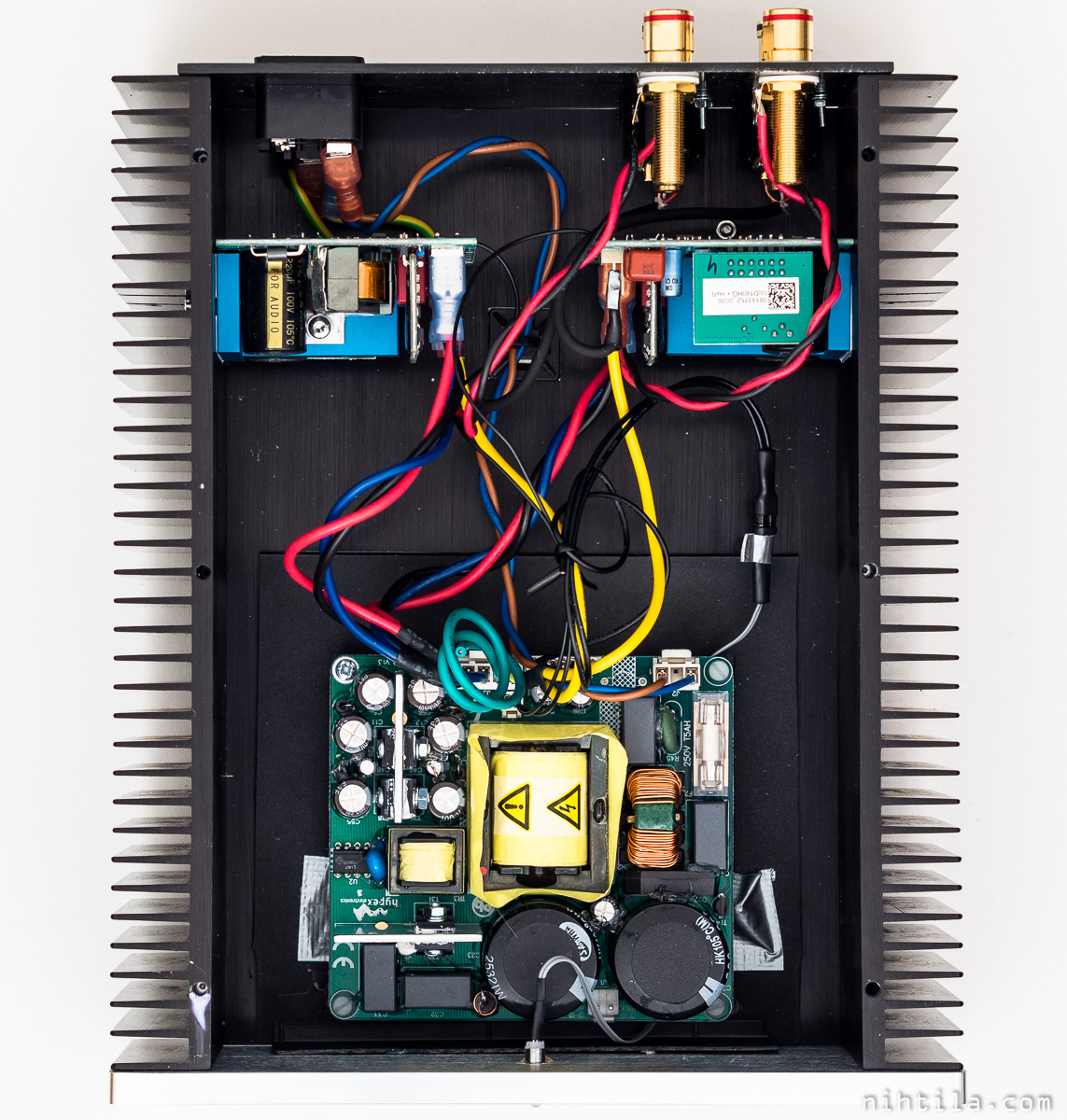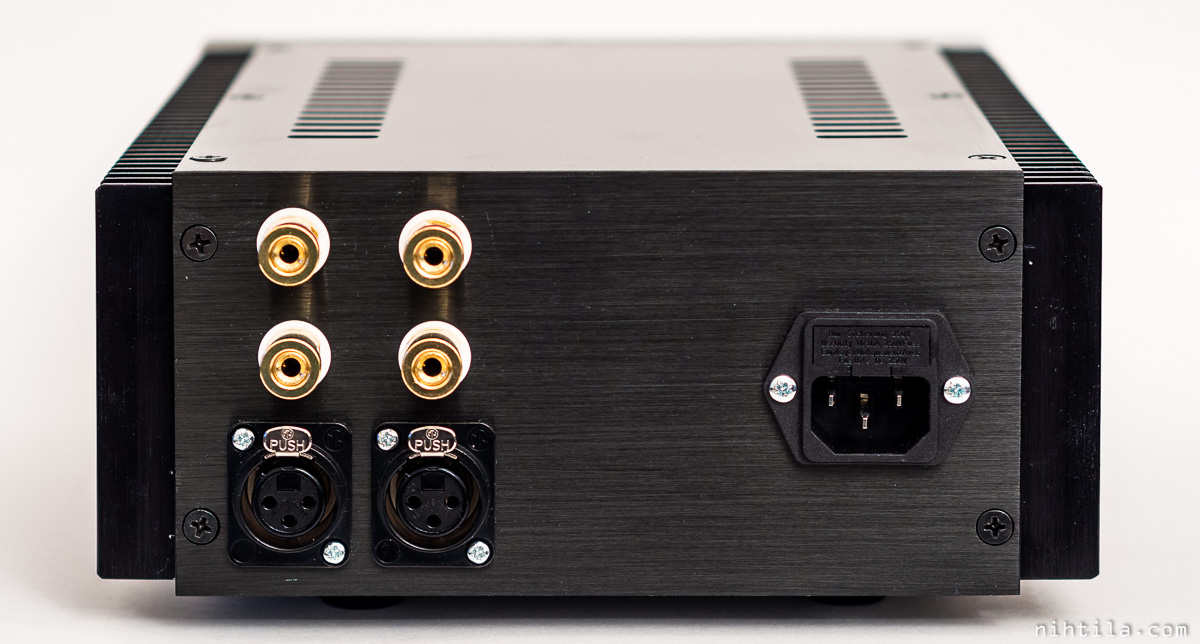This is not my own design but incorporates OEM/DIY modules from Hypex to make up a rather impressive stereo power amplifier:
- 2x Hypex UcD180HG HxR audio amplifier modules delivering 2x 180 W @ 4 Ω or 2x 120 W @ 8 Ω
- Hypex SMPS400A180 switched mode power supply designed for UcD180s with power rating of 400 W
I haven’t designed power amplifiers yet, and to understand everything deeply enough to design a discrete power amplifier from scratch is another long project I may try one day. First idea was to build an amplifier around some AB-class chips, so called gainclone or similar. However, I ended up ordering widely used D-class amplifier modules from Hypex (shop). This power amplifier consists of aluminium enclosure from eBay, Hypex SMPS400A180 400-watt switched-mode power supply and two Hypex UcD180HG HxR D-class amplifier modules with nominal power rating of 180 watts to 4 ohms and 120 watts to 8 ohms.
The enclosure is slightly overkill for these high-efficient modules but I may add two more modules one day. There is not too much space inside but enough for another pair of UcD180 modules. Obviously in such configuration I would not get full power output from all four amplifiers using only one power supply module but that would not be an issue in the real world.
There is not much to tell about this project as it was just about putting things together following Hypex instructions. Although I have to say those instructions could have been better (note that I built and wrote this in 2014). Documents are quite simple and short barely including all the necessary information, and obviously at least the power supply is designed to be used with various different modules making it more complex to figure out the necessary/possible connections. After all, all the information is there and it is all you need (and get). Hypex is selling specific cable sets which make things slightly easier although when powering two amplifiers from one power supply you need to divide the power cables. Besides mains voltage and dual DC-supply there are wires from amplifier outputs to a DC-protection circuit in the power supply, providing amplifier shutdown in case of DC-voltage at any output. It is also possible to use standby functionality but I will power off the amplifier completely when not in use.
I have to mention one anomaly from Hypex application notes. They suggest the user not to connect mains safety earth to the enclosure when using unbalanced connections to prevent ground hums, but instead make a so-called double-insulated design. Yes, ground loops can cause problems but I would never suggest DIYers to do that! Always connect safety earth unless you really know what you are doing. It is good to design double insulation in mind but still use safety earth. The best cure for possible ground loops is to use balanced interconnections. And even without, most probably there won’t even be any problems. Even if, solve the problem by other means than discarding safety.
I didn’t include power switch in the amp since there was ready-made hole for the mains connector without switch, and making rectangular holes in 3 mm aluminium with hand tools is quite frustrating. I am going to use mains switch for the whole system anyway. The power supply has mains sensing circuit so it mutes the amplifiers when the power is turned off. No loud thumbs can be heard from speakers even if I turn off all the devices simultaneously.
Disclaimer: This device uses possibly lethal mains voltage. Do not try to build this or similar device without extensive understanding of electronics and electrical safety. Also check the regulations in your country. If you do build your own mains-powered device, always use properly connected safety earth lead, fuses, safe clearance and extra insulators around and under the components and PCBs. Also make sure none of the mains leads or components can touch any metal parts if they get loose. Always disconnect your device from mains power completely when not in use.
Version history
This page
- 19.11.2014 Initial version
- 4.1.2017 Small update when re-published


